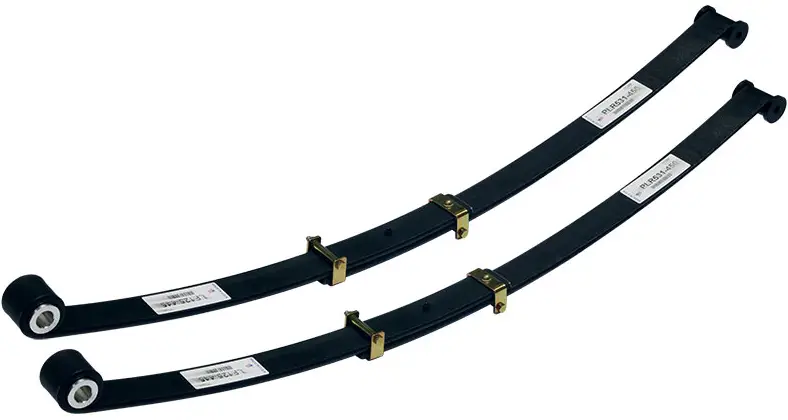If you’re an avid car enthusiast or mechanic, you might have heard the term “split mono leaf” before. But for those who are not familiar with car suspension systems, this term might sound foreign. In this article, we’ll delve into what a split mono leaf is, how it affects your car’s performance, and why it’s important to pay attention to it.
Contents
What is a Split Mono Leaf?
The split mono leaf is a component of the suspension system found in many cars. It is a type of leaf spring, which is a long, curved piece of metal that is used to support the weight of the vehicle and absorb shocks from the road. The split mono leaf is made up of two parts: the main leaf and the helper leaf. The main leaf is the larger, thicker piece of metal that is attached to the vehicle’s frame, while the helper leaf is the smaller, thinner piece of metal that is attached to the main leaf.
How Does a Split Mono Leaf Affect Car’s Performance?
The split mono leaf plays a crucial role in your car’s performance. It is responsible for absorbing shocks from the road, which ensures a smooth and comfortable ride. A worn or damaged split mono leaf can result in a bumpy, uncomfortable ride and can even affect your car’s handling and braking.
Signs of a Worn or Damaged Split Mono Leaf
There are several signs that your split mono leaf might be worn or damaged. These include:
- A bumpy, uncomfortable ride.
- Uneven tire wear.
- A noticeable decrease in your car’s handling and braking ability.
- A clunking or banging noise when driving over bumps.
- The car sits lower on one side than the other.
If you notice any of these signs, it’s important to have your split mono leaf inspected by a mechanic as soon as possible.
Causes of a Worn or Damaged Split Mono Leaf
There are several reasons why a split mono leaf might become worn or damaged. These include:
- Normal wear and tear over time.
- Overloading the vehicle beyond its weight capacity.
- Driving on rough or uneven terrain.
- Corrosion due to exposure to salt and other chemicals on the road.
How to Prevent a Worn or Damaged Split Mono Leaf
While it’s impossible to completely prevent wear and tear on your split mono leaf, there are a few things you can do to minimize the risk of damage. These include:
- Avoid overloading your vehicle beyond its weight capacity.
- Avoid driving on rough or uneven terrain whenever possible.
- Clean the underside of your vehicle regularly to remove any salt or chemicals that can cause corrosion.
- Have your suspension system inspected regularly by a mechanic.
Repairing or Replacing a Split Mono Leaf
If your split mono leaf is worn or damaged, it will need to be repaired or replaced. Repairing a split mono leaf involves reinforcing it with additional metal or welding it back together if it has cracked. However, if the damage is extensive, it may be more cost-effective to replace the entire spring.
The Importance of Choosing the Right Replacement Split Mono Leaf
When replacing your split mono leaf, it’s important to choose the right one for your vehicle. There are many different types and sizes of split mono leaves available, and using the wrong one can result in further damage to your suspension system. It’s best to consult with a mechanic or auto parts specialist to ensure that you’re getting the right replacement part for your car.
Conclusion
The split mono leaf is a crucial component of your car’s suspension system that should not be overlooked. It plays a vital role in ensuring a smooth and comfortable ride, as well as the handling and braking ability of your vehicle. Regular inspections and maintenance can help prevent wear and tear, but if your split mono leaf is damaged, it’s important to have it repaired or replaced as soon as possible.
